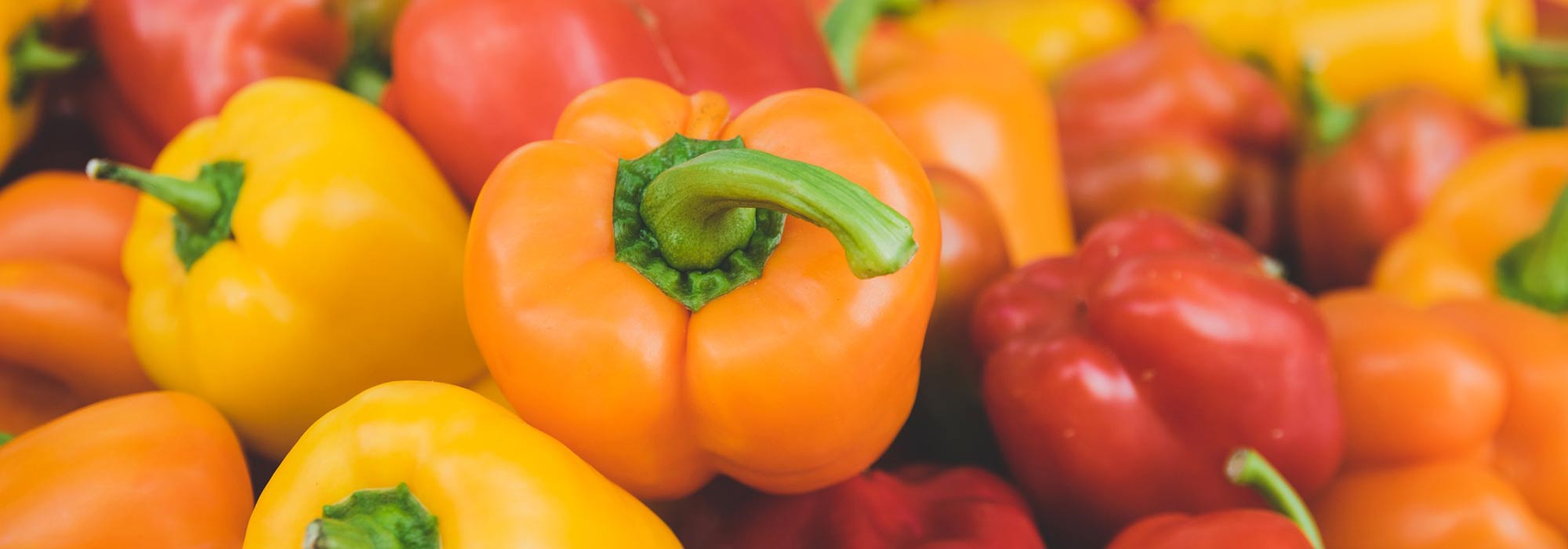
Peppers and Chillis: Sowing, Cultivation and Harvest
Contents
Peppers and chillies in a nutshell
- Peppers and chillies are solanaceae that belong to the genus Capsicum.
- The pepper, Capsicum annuum, is part of the sweet chillies.
- There are many varieties of chillies and peppers, with varied shapes, sizes, and flavours.
- The plants of the genus Capsicum need warmth and sunlight to thrive.
- Chillies are rich in vitamins and have medicinal properties.
A word from our expert
Bell peppers are sweet pepper cultivated for their large fruit, most often hollow and cubical in shape, consumed as a summer vegetable. Eaten raw in salads, grilled, stuffed, or confit, they lend themselves to a wide variety of culinary preparations. It is notably found in various traditional dishes, such as piperade, ratatouille, caponata, and chicken basquaise.
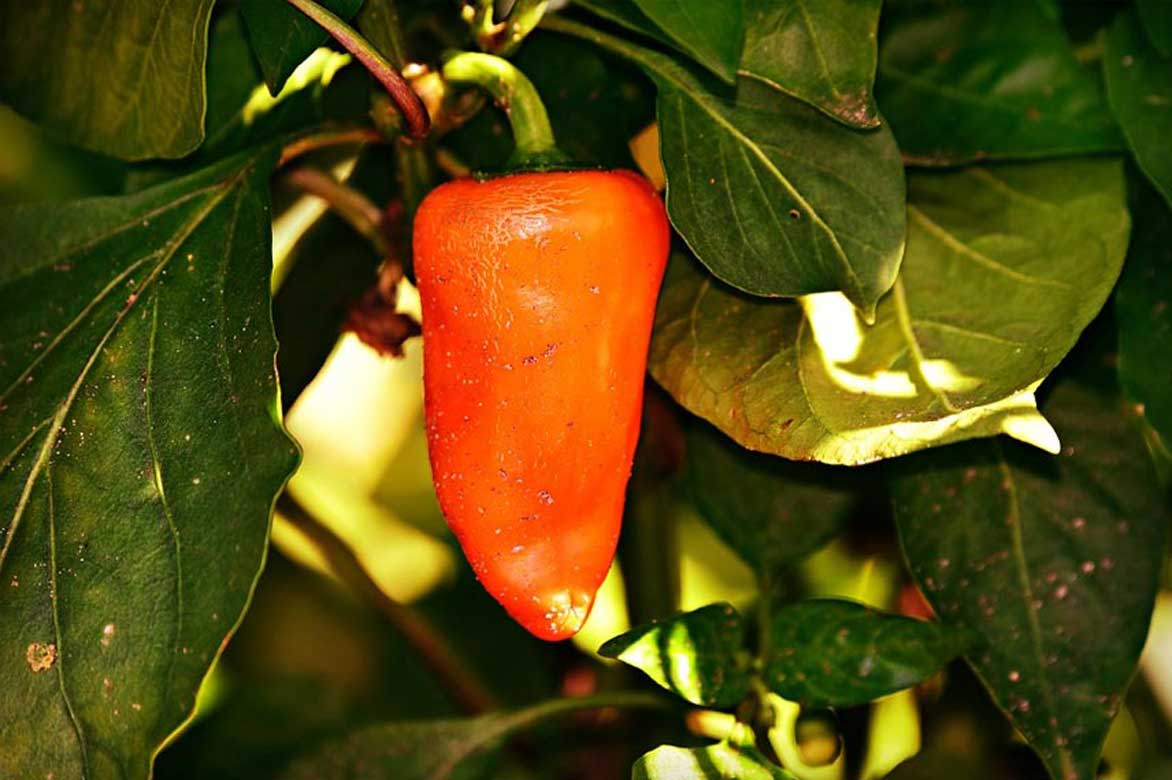
Capsicum annuum
On the other hand, chilli differs from the bell pepper by its more or less spicy flavour depending on the varieties. A heat that depends on the capsaicin content of the fruit. This is generally used as a condiment to spice up dishes. The heat of the chilli is measured using the Scoville scale, which has 11 levels. However, note that the flavour of the chilli should be distinguished from its heat.
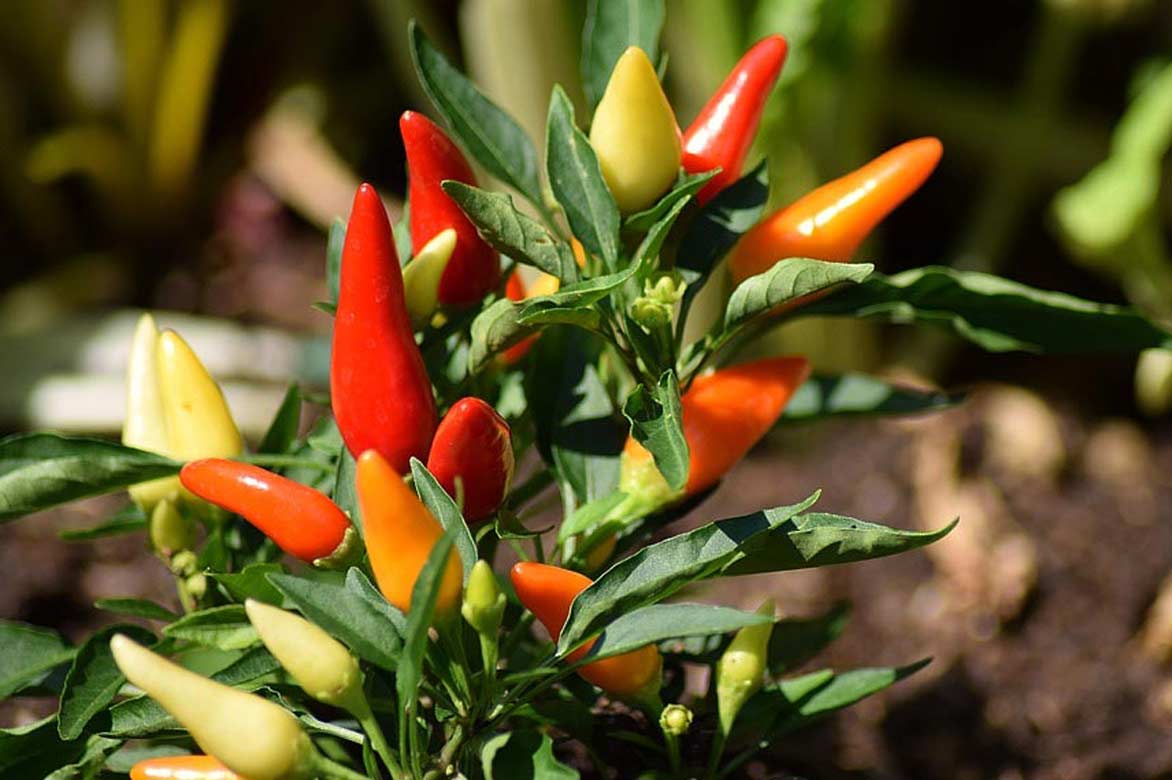
Capsicum frutescens
Originating from the tropical climates of South America, bell peppers and chillies require plenty of heat and light to develop properly and bear fruit.
The fruits of bell peppers and chillies are very rich in vitamin C, as well as provitamin A. The chilli is also considered an excellent antioxidant.
Description and botany
Botanical data
- Latin name Capsicum annuum, Capsicum chinense, Capsicum frutescens, Capsicum pubescens, Capsicum baccatum
- Family Solanaceae
- Common name bell pepper, sweet pepper, chili, hot pepper
- Flowering June to August
- Height 0.40 to 1.50 m (variable depending on varieties)
- Exposure sunny and sheltered from cold winds
- Soil type light, loose, well-drained, rich
- Hardiness not hardy
The genus Capsicum is originally from South America. It has however spread widely across the globe. Many varieties have thus developed and differentiated naturally according to their growing location.
Chili is a perennial plant in its countries of origin, grown as an annual in our latitudes. It belongs to the family of Solanaceae, and the genus Capsicum which includes five species: Capsicum frutescens, Capsicum annuum, Capsicum baccatum, Capsicum chinense, Capsicum pubescens.
- Capsicum annuum is the species most represented in the world, notably due to the bell pepper. This is the variety brought back by Christopher Columbus to Europe from his return from America.
It is interesting to note that the term “bell pepper” is not actually either a species or a variety, but simply a common name used in everyday language to refer to a subset of Capsicum annuum without heat, whose capsaicin content is low enough not to be perceived.
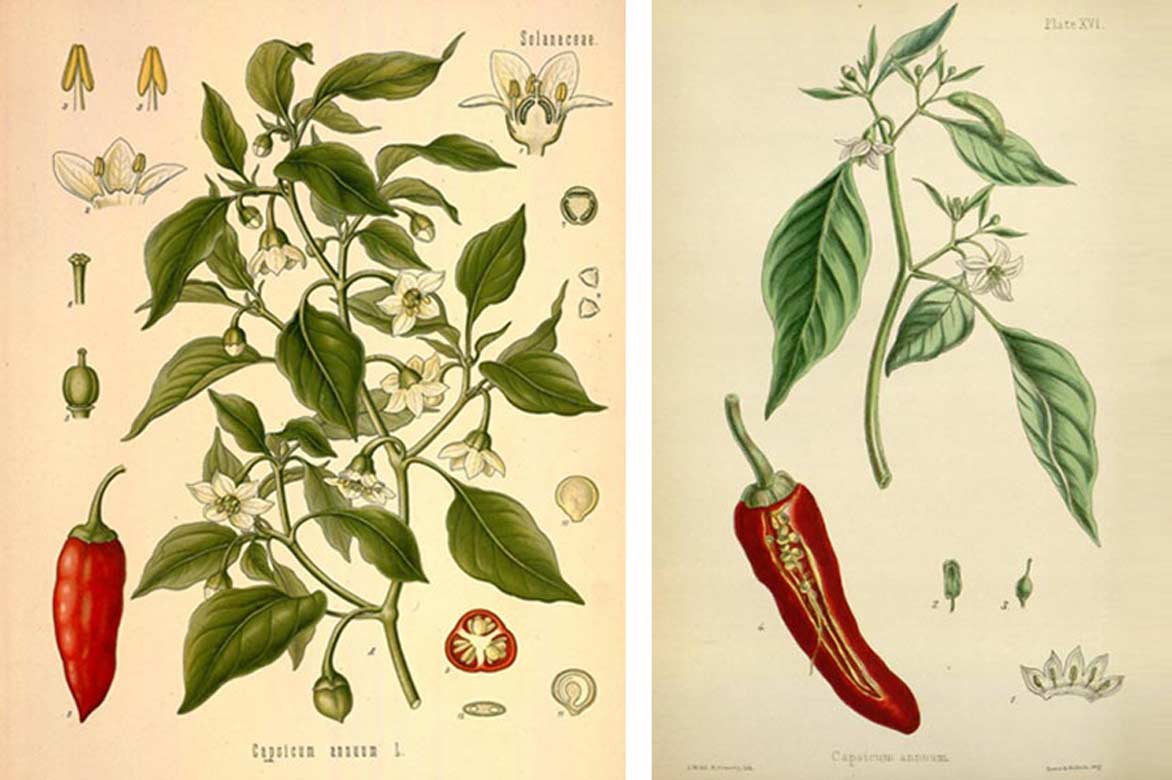
Capsicum annuum, Biodiversity Heritage Library – Flickr
- Capsicum chinense includes most of the world’s hottest chili varieties. Their name “chinense” is a mistake by Nikolaus Joseph von Jacquin who believed they originated from China. It is more likely that these chilies are native to South America and the Caribbean.
- Capsicum frutescens forms shrubs bearing small aromatic fruits with a spicy flavour (high capsaicin content), and is distinguished from other species by its growth habit. Indeed, they tend to point upwards rather than hang down.
- Capsicum pubescens has been cultivated for nearly 6,000 years. Its name refers to its leaves covered in small hairs. The chilies from this species are mostly grown in Mexico, South America, and Guatemala, and are rarely found in other regions of the world.
- Capsicum baccatum is a chili species that includes varieties native to Bolivia. In fact, this is where the most “wild” chilies are found. Its name refers here to its fruits that are very similar to berries.
Although they all belong to the genus Capsicum, bell peppers and chilies come in very varied shapes and sizes. Their thick stems usually bear entire and lanceolate leaves with a thick lamina. Flowering most often consists of flowers grouped and located in the axil of the leaves. In most cases, their fused corolla forms a white or purple cup.
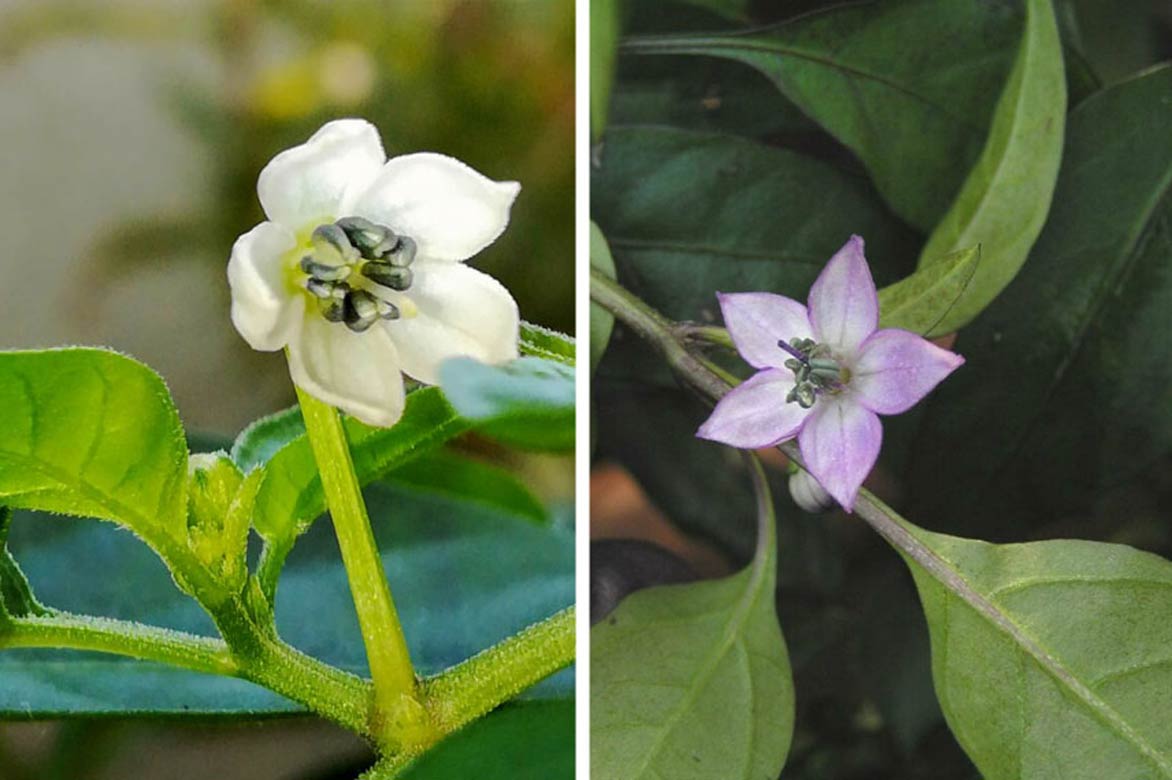
Flower of Capsicum annuum © Gianni del Bufalo | Flower of Capsicum frutescens © QG d’Aqiao – Flickr
The fruits, generally thin-walled and hollow, contain round, flat, white seeds, except for Capsicum pubescens whose seeds are black. The smaller they are, the more numerous the fruits of Capsicum are on the plant. Depending on the varieties, the chili can have upright or pendulous fruits, in cylindrical, rounded, or bishop’s cap shapes, and offer various colours (red, yellow, green, purple, variegated…).
Main species and varieties
“`html
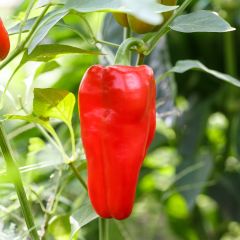
Pepper Doux d'Espagne - Capsicum annuum
- Flowering time June to October
- Height at maturity 80 cm
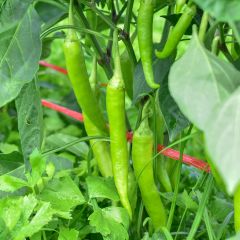
Pepper Sweet Banana
- Flowering time June to October
- Height at maturity 60 cm
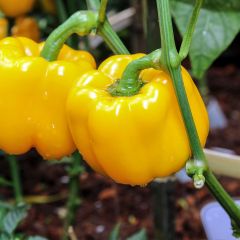
Sweet Pepper Yellow California Wonder
- Flowering time June to October
- Height at maturity 60 cm
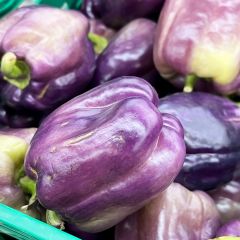
Sweet Pepper Purple Bell
- Flowering time June to October
- Height at maturity 60 cm
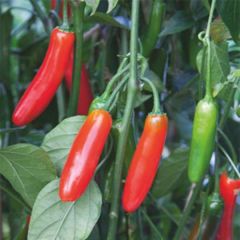
Chilli Pepper Serrano
- Flowering time June to October
- Height at maturity 1 m
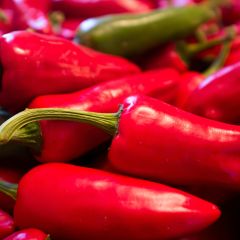
Chilli Pepper Piment dEspelette - Gorria
- Flowering time June to October
- Height at maturity 60 cm
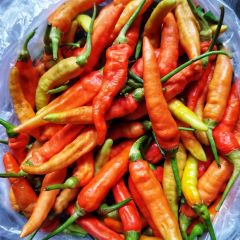
Chilli Pepper Tabasco
- Flowering time June to October
- Height at maturity 40 cm
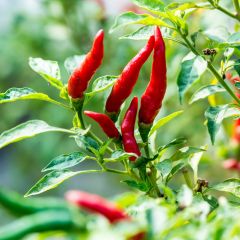
Cayenne Pepper - Ferme de Sainte Marthe Seeds
- Flowering time June to October
- Height at maturity 1 m
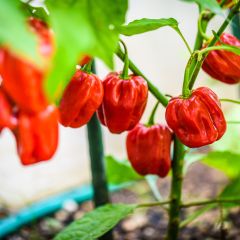
Chilli Pepper Habanero
- Flowering time June to October
- Height at maturity 1 m

Sweet Pepper Purple Bell
- Flowering time June to October
- Height at maturity 60 cm
“`
Discover other Pepper seeds
View all →Available in 1 sizes
Available in 1 sizes
Available in 1 sizes
Available in 1 sizes
Available in 1 sizes
Available in 1 sizes
Available in 1 sizes
Available in 1 sizes
Available in 1 sizes
Available in 1 sizes
Sowing and planting of peppers and chillies
Where to install peppers and chillis?
To thrive, chillis and peppers need to be planted in rich, well-draining soil, but to bear fruit, they also require a warm, bright location. Provide them preferably with a sunny position sheltered from cold winds. If your garden does not offer the right conditions (especially if you live in a cool region), it is better to install your plants of the genus Capsicum under cover.
When to sow peppers and chillis?
Sowing of chillis begins in March, although plants grown in a greenhouse can be sown earlier, as soon as February.
How to sow peppers and chillis?
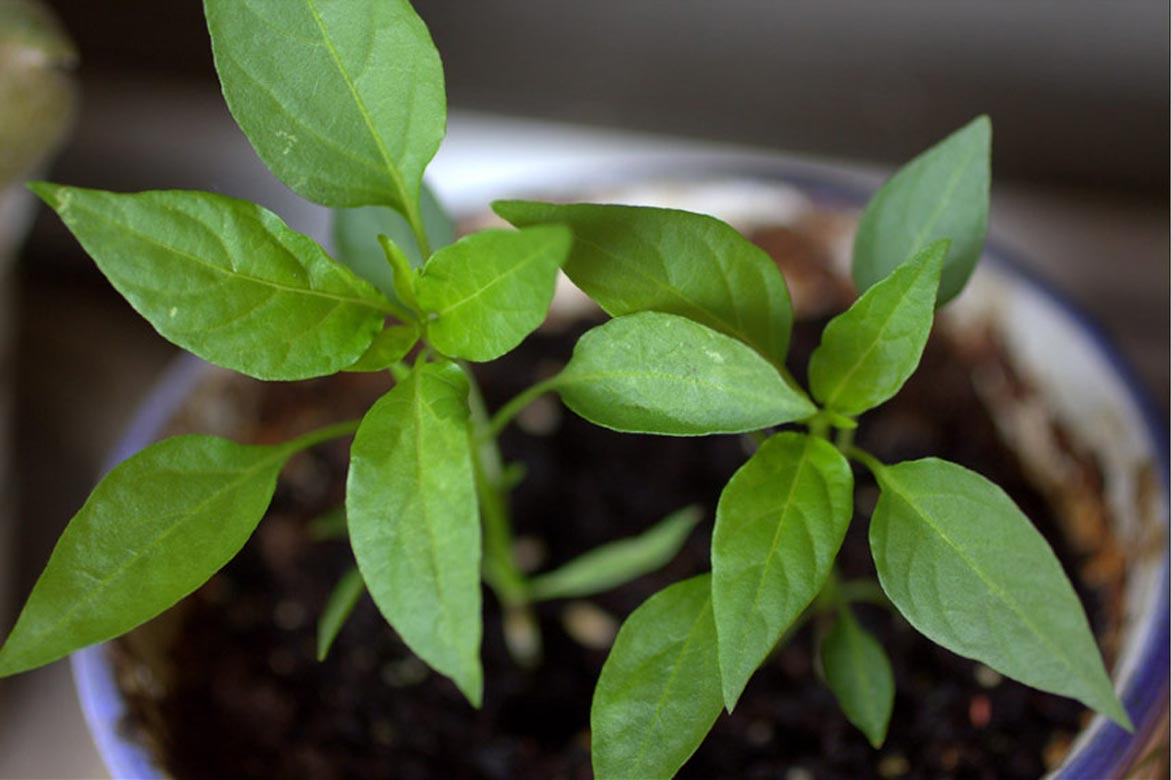
© manuel mv – Flickr
Sowing of Capsicum is always started in a warm environment, indoors or in a heated shelter. The optimal germination temperature is around 25°C. Feel free to place your trays on a radiator to maximise your chances of germination. It is also possible to use a heated propagator. In any case, place your chilli seeds in a bright location. When these conditions are met, the seeds usually germinate in 10 days, sometimes less.
- Push the seeds 1 cm deep into trays filled with good moist potting soil.
- Place the chilli seedlings near a window or under heated frames.
- When they reach 7 cm tall and have their first two leaves, transplant the young plants into individual pots.
- Use a mix of garden soil and potting soil as substrate.
When to plant peppers and chillis?
Young plants of peppers and chillis are planted in the ground in the vegetable garden after mid-May. Any risk of frost must then be eliminated. Depending on your region, it is advisable to wait until June to plant your chillis outdoors. Indeed, they are sensitive to cold and only thrive from 15°C.
Note: the smaller chilli varieties can easily be transplanted and grown in a large pot on a balcony.
How to plant peppers and chillis?
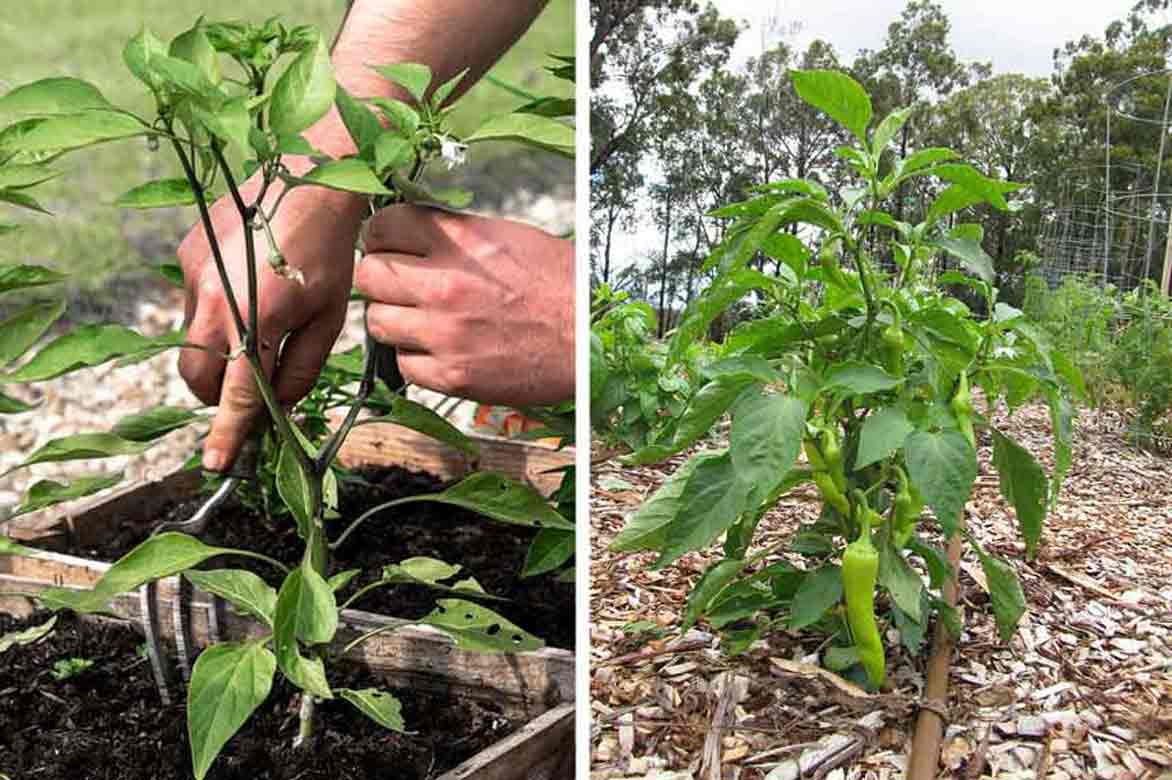
© Forest and Kim Starr – Flickr
- Start by weeding, loosening, and enriching the soil in the vegetable garden.
- Dig planting holes three times the volume of the root ball.
- Plant your chillis and peppers spaced 50 to 60 cm apart.
- Although not essential, you may stake your plants, especially in windy conditions.
- Keep the soil moist by watering at the base.
To help your plants adapt to the open ground, feel free to use a cloche for the first 2 to 3 weeks after planting.
Read also
Strength of chilliesHarvest, storage, and use
Harvest
Chillies and peppers are harvested at ripeness, between mid-August and the end of October, approximately five months after sowing.
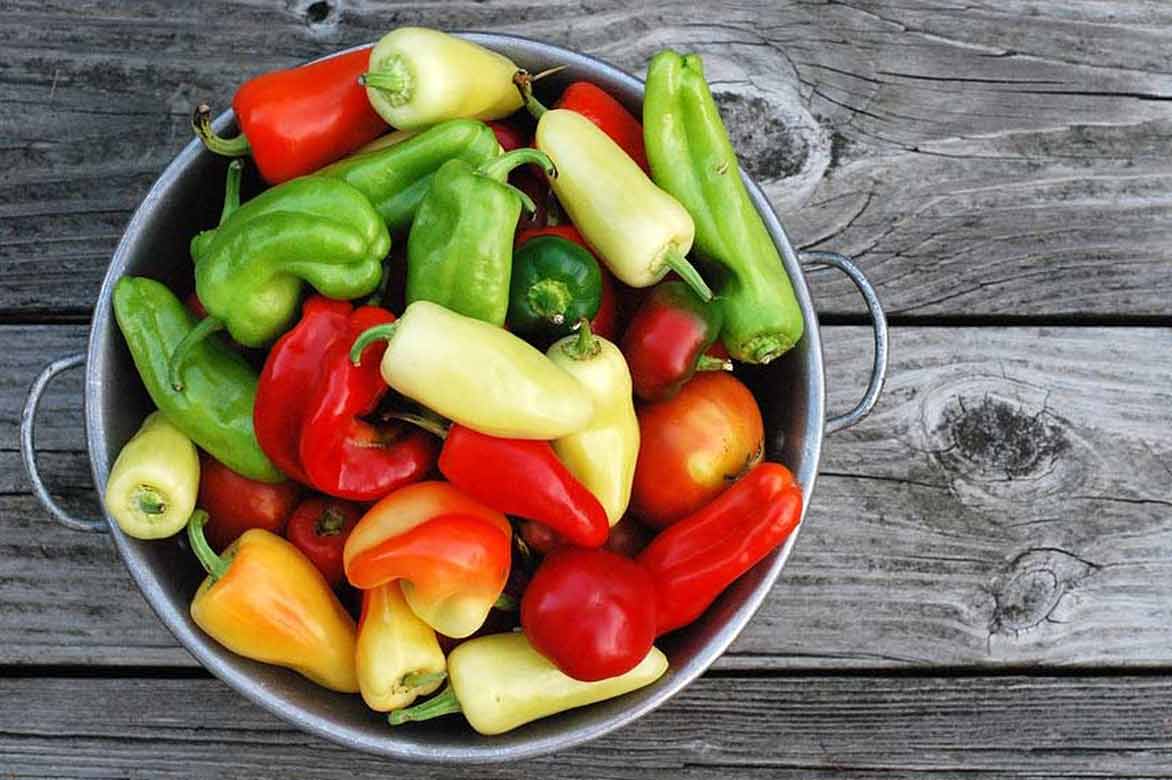
Be careful not to pull the fruits off as this may damage the plant. Instead, cut the fruits one by one using a pair of small scissors or a knife, leaving 1 to 2 cm of neck.
If they are not fully ripe, you can also cut entire stems from your chilli plants and hang them upside down in a cool, dry space to allow them to finish ripening.
Note: peppers can be consumed and therefore harvested while still green. However, they only develop their full flavour once fully ripe.
Storage
Note that chillies and peppers last on average 1 week in the vegetable drawer of the refrigerator. In a dry, cool room, this duration can be extended to about 2 weeks.
Chillies are usually bunched together and left to dry in the sun or in the oven (the former being the most recommended option). They can then be ground into powder, or preserved in vinegar, brine, or oil. It is also possible to freeze your chillies, which should then be consumed within 6 months.
Be careful when handling hot chillies; avoid any contact with small wounds, eyes, and mucous membranes…
Culinary uses
Pepper is part of many recipes. Raw or cooked, marinated, stuffed, grilled, in salads, in cakes, in sauces… the possibilities are endless.
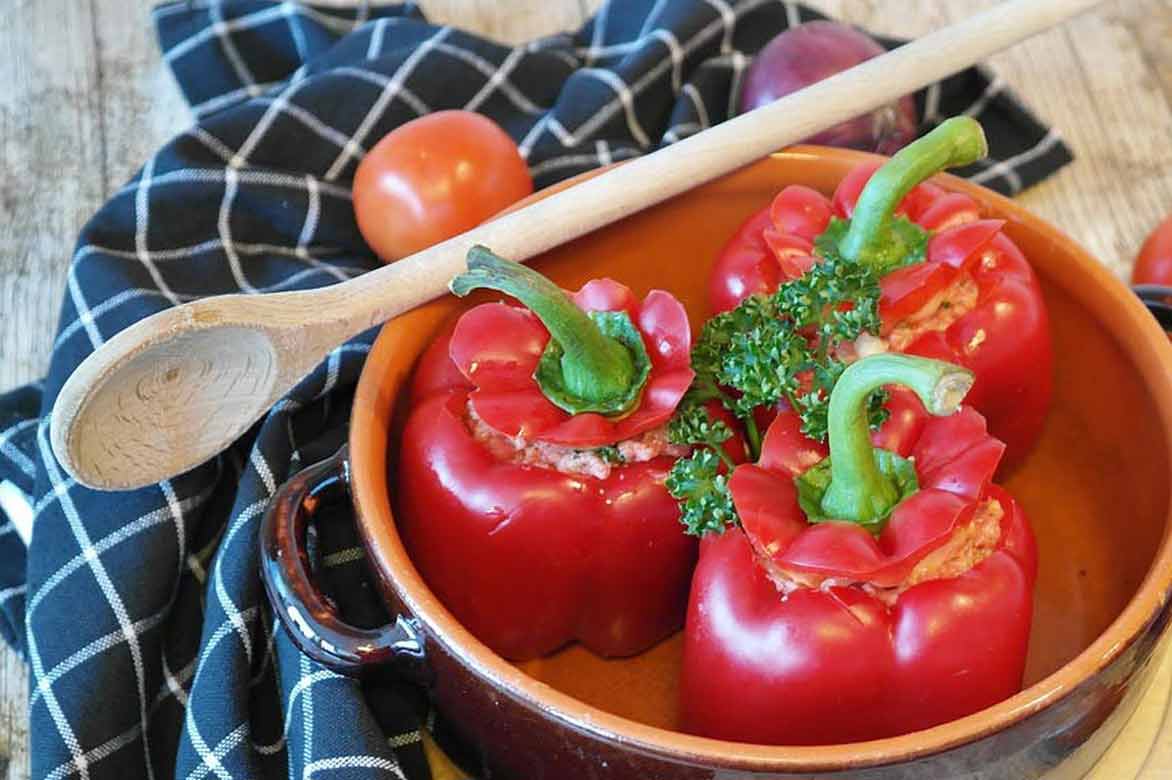
Chillies are used as condiments to flavour and spice up hot or cold dishes. They can be added during cooking, or used for seasoning. It’s best to add them 10 to 15 minutes before the end of cooking in your hot dishes, so they can concentrate all their flavours.
Virtues and benefits
Low in calories, chillies and peppers are very rich in vitamin C, carotene (especially the red, yellow, and orange ones) and vitamin E. They are, in fact, known for their antioxidant properties. Chillies are also rich in fibre, vitamins B6 and B9, and contain little sodium, with a high water content.
Garden use
Chilli maceration is an excellent natural repellent to combat insect invasions.
- Use 25 cl of hot chilli for 50 cl of water.
- Let it macerate for 24 hours.
- Then dilute 15 ml of this preparation in 4 l of water before applying by spraying.
Be careful not to use this chilli maceration on your young plants.
Care and maintenance of chillies and peppers
Once well established, chillies and peppers do not require much maintenance, apart from regular watering in summer to encourage abundant fruit production.
Weeding and hoeing will also be necessary here, although all these tasks can be largely limited to the bare minimum thanks to the installation of good mulching. Place thin successive layers of dry leaves or grass clippings at the base of your Capsicum plants.
To avoid a build-up of pests and depleting your soil, ensure you respect a gap of 3 to 4 years before replanting chillies in the same spot.
→ Read also the pruning of summer vegetables
Diseases and potential pests of peppers and chillies
Chillies and peppers can be affected by the same diseases as tomato. Downy mildew and anthracnose are, however, much less common in them than in tomato. To further reduce the risk of diseases, avoid wetting the leaves of your Capsicum plants during watering, and ensure you adhere to the recommended planting distances. If necessary, spray Bordeaux mixture on your plants.
Chillies and peppers are very rarely subject to attacks from pests. Only aphids are to be feared here. However, these can easily be eliminated by spraying a mixture of water and black soap on the leaves and stems of the plant.
→ Learn more about diseases and pests of peppers
Multiplying peppers and chillies
As we have seen previously, the propagation of chillies is done by sowing.
To harvest the seeds of chillies, be mindful of the risks of cross-pollination. Always choose a chilli that you are sure has not been pollinated with pollen from other plants growing nearby. Similarly, make sure to collect seeds from fully ripe fruits. They will thus be well-formed, dry, and easy to detach from the fruit. Preferably select the most vigorous and attractive plant, a sign of good health.
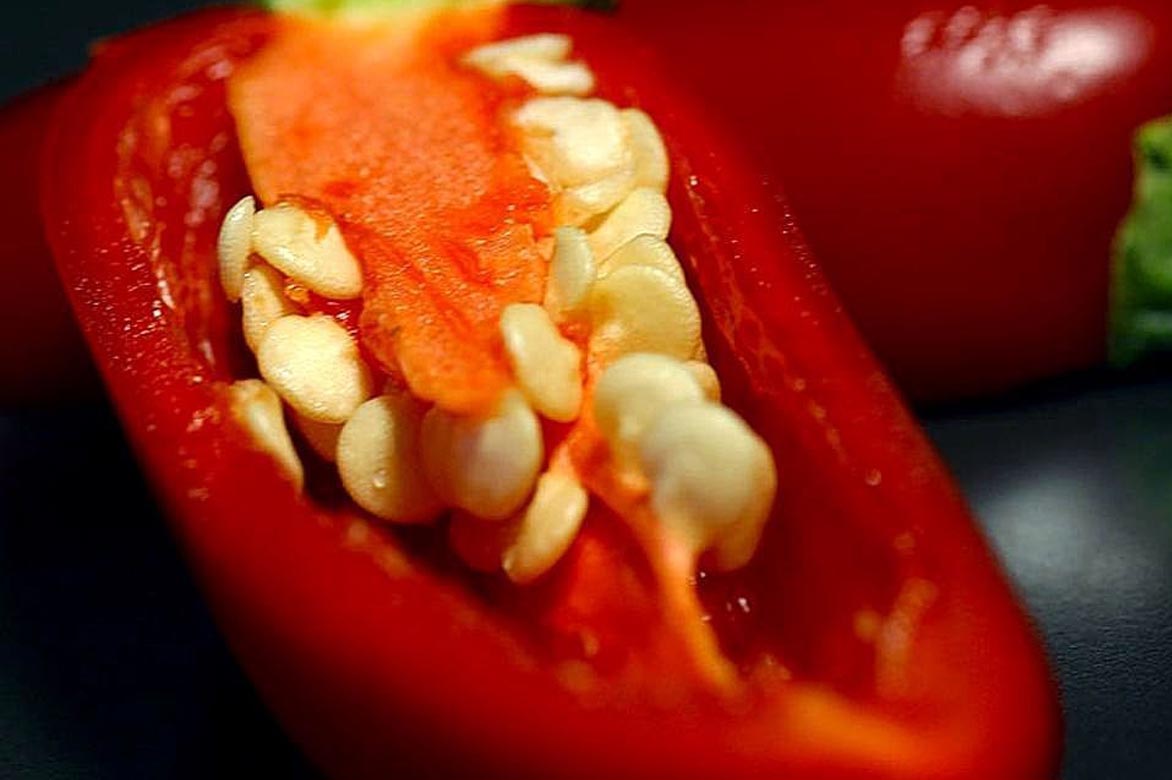
- Wear gloves before handling the chillies and their seeds.
- Cut the fruits in half and scrape out the seeds to detach them.
- Keep only those that are well-formed, showing a cream colour.
- Let them dry (without washing) for 24 hours.
- Place the dry seeds in paper or fabric bags.
- Label the bag with the variety.
- Store them in a dry place away from light.
- The seeds will retain their germination capacity for 4 to 5 years.
Pairing peppers and chillis
Peppers and chillies grown in open ground can be favourably associated with cabbages, carrots, and African marigolds (which stimulate their production). However, avoid any proximity to other solanaceae (aubergine, tomato, potato…)
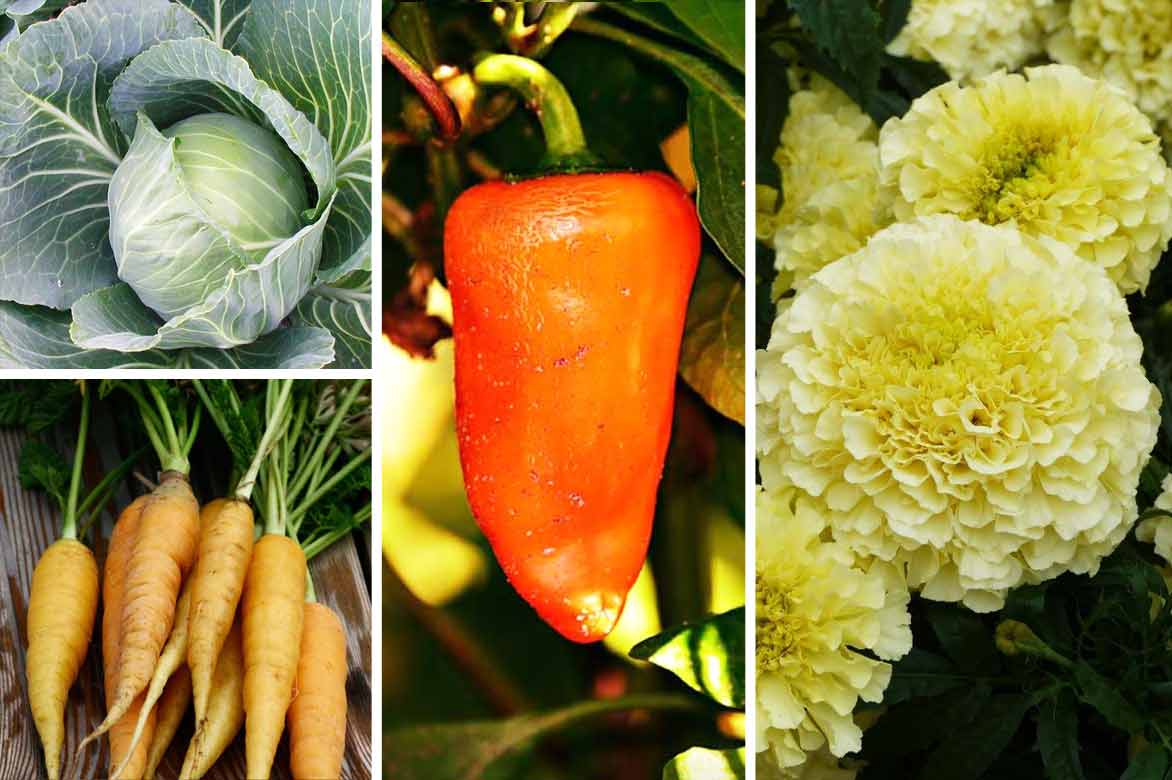
Useful resources
- Stock up on chillies and peppers with our selection available on the site
- Ensure success with your chilli and pepper crops with Ingrid’s expert advice
- Not sure about the strength of chillies? The Scoville scale will hold no secrets for you after reading our dedicated article on the subject
- Our article: choosing peppers and chillies
- Our article: the diseases and pests of peppers
- Subscribe!
- Contents































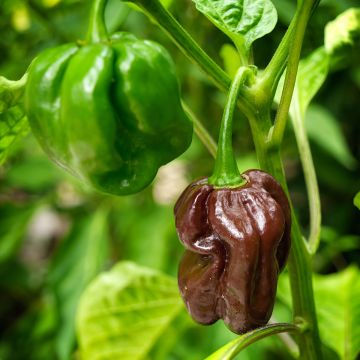
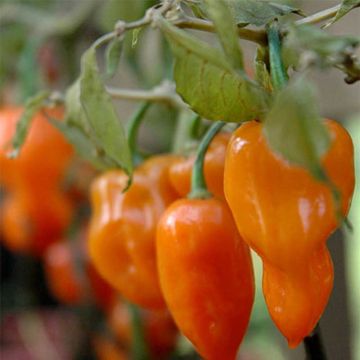
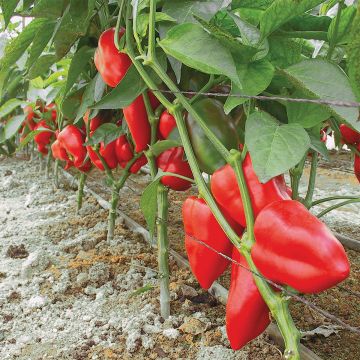
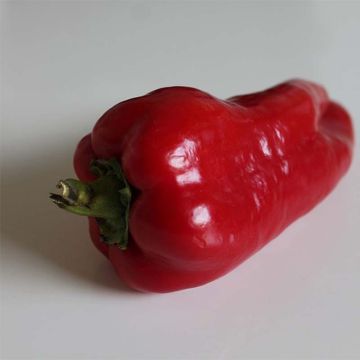
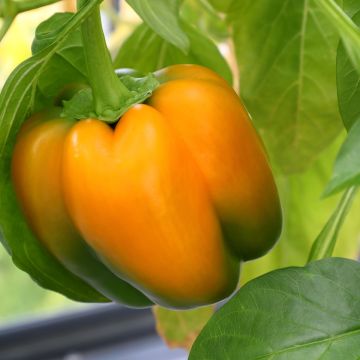
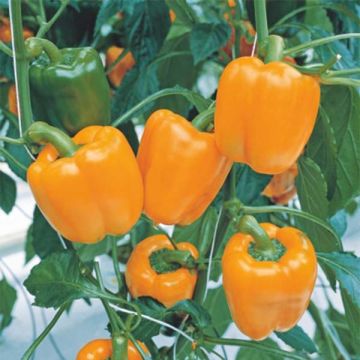
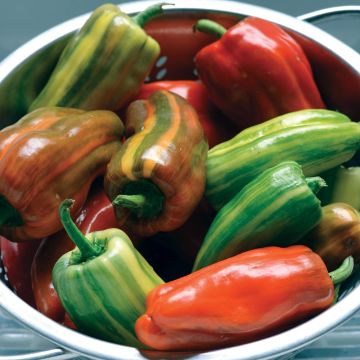

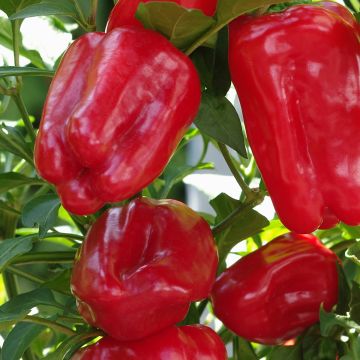
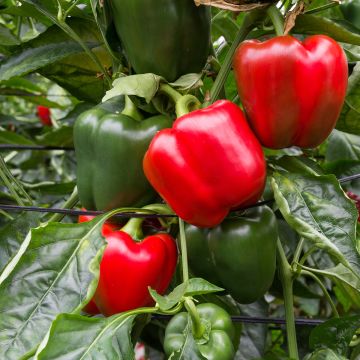
Comments